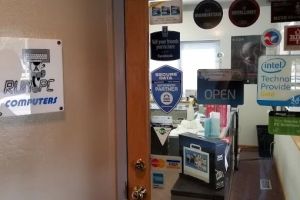How to Boot a System from a USB Recovery Drive: Step-by-Step Guide
- Understanding USB Recovery Drives
- How to Create a USB Recovery Drive
- How to Boot Your System from a USB Recovery Drive
- Troubleshooting USB Boot Issues
Understanding USB Recovery Drives
A USB recovery drive is an essential tool for any computer user. It allows you to restore or repair your system in case of issues like corrupted files, operating system errors, or failed installations. When your system encounters problems and fails to boot, the USB recovery drive serves as a lifesaver, enabling you to recover data or reinstall the operating system. This guide will show you how to boot your system from a USB recovery drive, so you can get back to using your computer with minimal hassle.

Secure Data Recovery Services
524 W Laurel St #2, Fort Collins, CO 80521, USA
How to Create a USB Recovery Drive
Before you can boot from a USB recovery drive, you'll need to create one. Here’s how you can prepare your USB drive for this purpose:
- Step 1: Get a USB drive with at least 8GB of free space.
- Step 2: Go to your computer's settings and search for “Create a recovery drive” in the Windows search bar (or equivalent for other operating systems).
- Step 3: Follow the on-screen instructions to create a recovery drive. You may need to insert your Windows installation media if you want to include system files.
- Step 4: Once the process is completed, store the USB recovery drive in a safe place for future use.
How to Boot Your System from a USB Recovery Drive
Once you’ve created your USB recovery drive, the next step is to boot your system from it. Follow these instructions to boot your system:
- Step 1: Insert the USB recovery drive into an available USB port on your computer.
- Step 2: Power on your computer and immediately press the boot menu key (usually F12, F10, or ESC depending on the manufacturer).
- Step 3: From the boot menu, select the USB recovery drive as the boot device.
- Step 4: Your computer will now boot from the USB drive, and you can access various recovery options like system restore or a full reinstall.
If these steps don't work, make sure that the USB drive is properly formatted and that the boot order in the BIOS is set to prioritize booting from USB devices.

Best Buy
4210 Centerplace Dr, Greeley, CO 80634, USA
Troubleshooting USB Boot Issues
If you're having trouble booting your system from a USB recovery drive, try these troubleshooting tips:
- Check USB Port: Sometimes, the issue could be as simple as a malfunctioning USB port. Try plugging the USB drive into a different port.
- Correct Boot Order: Ensure that the boot order in BIOS/UEFI is set to boot from USB first. You can adjust this setting in your computer's BIOS settings.
- USB Drive Format: Make sure the USB drive is properly formatted as a bootable device. You may need to recreate the recovery drive if the format is incorrect.
- BIOS Update: In some cases, a BIOS update may resolve booting issues. Check for updates on your computer manufacturer's website.
In case you still face difficulties, you can also consider getting additional tools or services for more advanced recovery solutions.
If you want to learn more about USB recovery drives or are looking for recovery tools, check out Ninja Stik for a selection of useful products to help with system recovery.





























